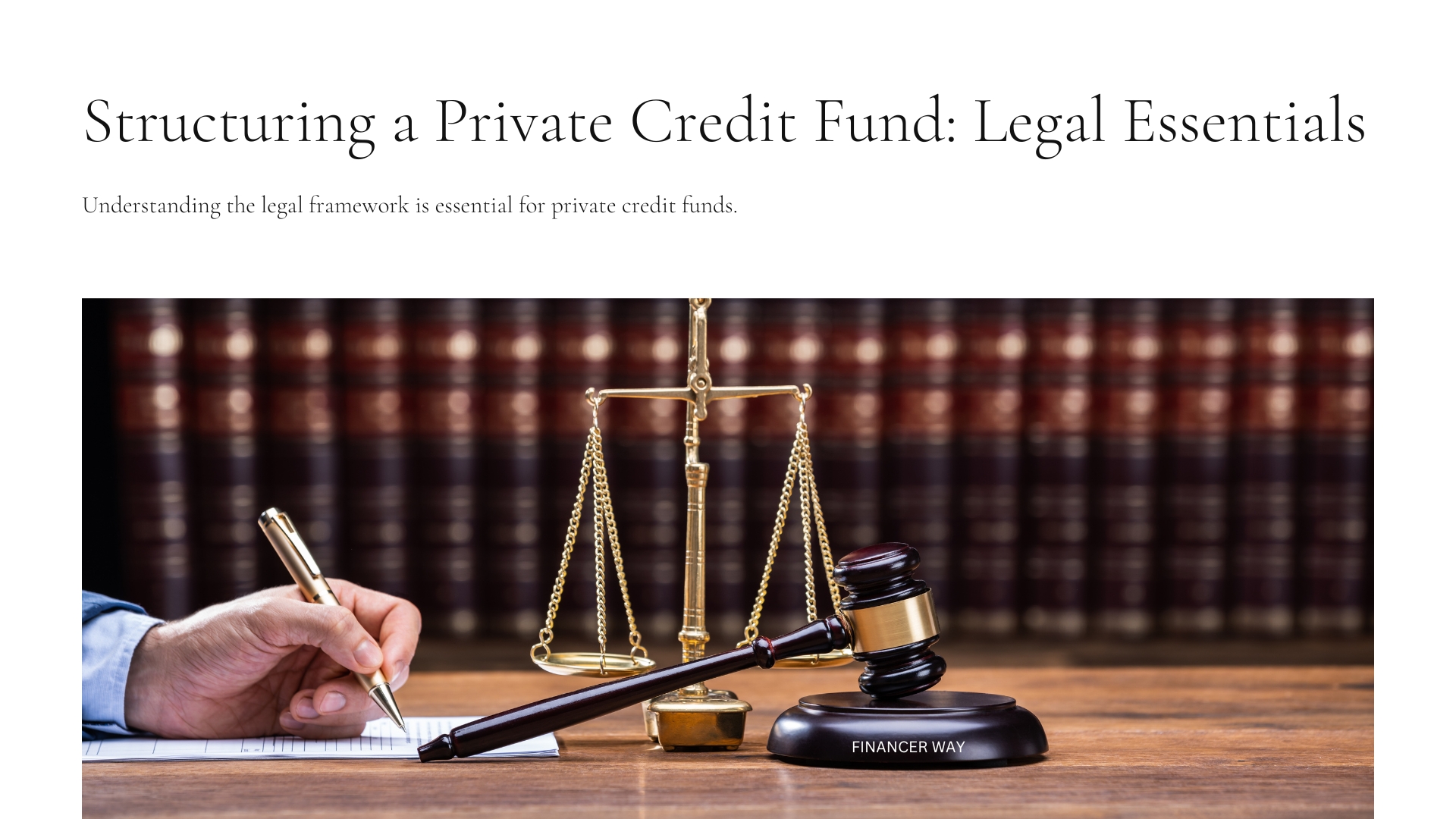Learn how to structure a private credit fund, including legal and regulatory requirements, investment objectives, and tax efficiency. Get expert guidance on how to start a successful private credit fund.
Private credit funds have become an increasingly popular investment vehicle for institutions and individuals seeking to diversify their portfolios and earn attractive returns. However, structuring a private credit fund requires careful consideration of several factors, including legal and regulatory requirements, investment objectives, and tax efficiency. In this article, we will provide you with a detailed guide on how to set up a private credit fund, helping you avoid complexities and ensure a successful launch.
Legal Framework

1. Limited partnership (LP)
Limited partnerships (LPs) are the most common legal structure for private credit funds. An LP is made up of a general partner (GP) and a limited partner (LP). GPs manage funds, while LPs provide capital and have limited liability.
2. Limited Liability Partnership (LLP)
A limited liability partnership (LLP) provides liability protection for all partners, making it an attractive alternative to LPs.
3. Corporate structure
A corporate structure, such as a limited partnership, can also be used, but may not be as tax efficient as an LP or LLP.
the second.
Investment objectives and strategies

1. Define investment objectives.
Clearly state the fund’s investment objectives, such as:
- Target return
- Risk tolerance
- Investment horizons
- Sector focus (e.g. real estate, consumer credit)
2. Develop an investment strategy
- Specify the type of credit instruments in which to invest (for example, loans, bonds, accounts receivable);
- Determine the investment method (for example, direct loans, secondary market purchases);
- Establish a risk management framework.
Mandatory implementation

1. Registration and License
Register the fund with the relevant regulatory authorities, such as the Canadian Securities Administrators (CSA) in Canada.
2. Compliance with securities laws
Ensure compliance with securities laws and regulations, including anti-money laundering, and understand your clients’ needs.
3. Tax compliance
Obtain the necessary tax registration and comply with tax laws and regulations.
TAX EFFICIENCY

1. Tax-exempt investors
Consider structuring the fund to accommodate tax-exempt investors, such as pension funds or charities.
2. Flow units
Use flow-through entities like LP or LLP to minimize tax liabilities and maximize investor returns.
3. Tax-optimized investment structure
Implement a tax-optimized investment structure, such as a block corporation, to minimize tax implications.
Governance and administration

1. Establish a governance structure
Define roles and responsibilities for GP, LP and investment manager.
2. Hire an investment manager
Appoint an experienced investment manager to oversee the fund’s investment activities.
3. Fund management
Hire a third-party administrator to handle fund accounting, tax compliance, and investor reporting.
CONCLUSION
Creating a private credit fund requires careful consideration of legal, regulatory and tax factors. By following this guide, you can ensure a successful launch and attract investors looking to diversify their portfolio with private credit investments.
Frequently asked questions about the structure of private credit funds
Q1: What is a private credit fund?
A1: A private fund is an investment vehicle that raises capital from investors to lend to individuals, companies or other entities, generating profits through interest payments and principal payments.
Q2: Why form a Private Credit Fund?
A2: The structure of the private credit fund allows for efficient management, risk diversification and attractive returns, making it an attractive option for investors seeking alternative investment opportunities.
Q3: What are the advantages of the limited partnership (LP) structure?
A3: An LP offers limited liability protection, tax efficiency, and management and ownership flexibility for investors.
Q4: How do I determine investment objectives and strategies for my private credit fund?
A4: Define your investment objectives based on target return, risk tolerance, and investment horizon. Develop an investment strategy that describes the types of credit instruments, investment approach and risk management framework.
Q5: What regulatory requirements apply to private funds in Canada?
A5: Register your fund with the Canadian Securities Administrators (CSA), obtain the necessary licenses and understand securities laws, anti-money laundering and your client requirements.
Additional Resources
Private Fund Structure Checklist – A comprehensive checklist to guide you through the structuring process.
Private Fund Investment Strategy Template – A template to help you develop a clear investment strategy.
Example of a private credit fund governance framework: A model governance framework to ensure effective decision-making and monitoring.
Private Credit Fund Regulatory Compliance Guide – A detailed guide to help you navigate regulatory requirements in Canada.
